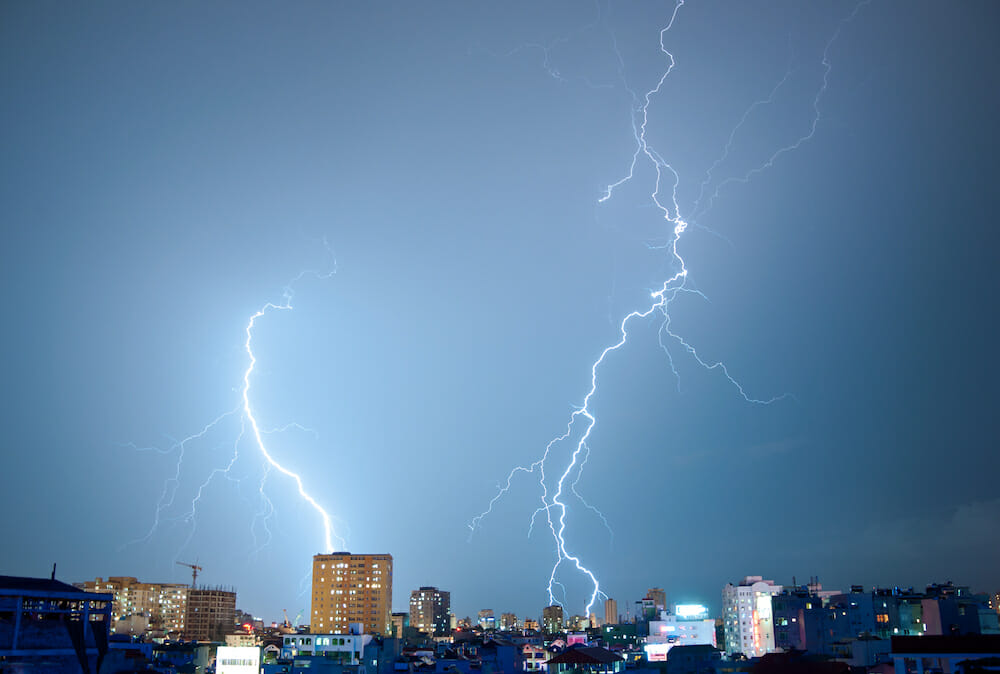Severe weather puts things in perspective. It can make us stay home from work, check on loved ones we haven’t talked to in months, or hide out in a basement for hours on end. Mother Nature is indifferent to our plans, our jobs, and especially our roofs.
Whether you’ve recently experienced a severe storm or you’re about to, here’s what you need to know about how severe weather affects commercial roofs.
Material Matters
Not all commercial roofs are constructed the same way. There are multiple types of commercial roof builds, and each respond to severe weather differently. Here are a few of the most common commercial roof build types and how they respond to severe weather.
1. Built-Up Roofing—Built-Up Roofing systems, also referred to as BUR, generally are composed of alternating layers of bitumen and reinforcing fabrics that create a finished membrane. There are two types of layers for BUR roofs. The first is either gravel or some other type of granule, which endures hail well, but is vulnerable to wind, which can blow off this top layer, leaving lower layers open to damage from water or hail. The second is a smooth finish, such as asphalt. Smooth finishes on a built-up roof, while less susceptible to wind damage, are more vulnerable to hail.
2. Ethylene Propylene Diene Monomer (EPDM) Roofing—EPDM roofing is rubber roofing. This type of roof generally fairs well in severe weather. However, like all roofs, if there is not a sufficient slope and water starts to pond in specific areas, then there is a risk of damage due to the weight of the water and the fact that, after repeated instances, it may eventually eat through the surface of the roof and cause a leak.
3. Metal Roofing—Metal roofing generally holds up well during storms, sustaining mainly superficial damage. One thing to be aware of, though, is the roof’s finish. The finish can be “chipped or cracked by the hail, which can then lead to the development of rust.”
4. Thermoplastic Roofing—Because thermoplastic roofing is made to flex, it is generally resilient in the face of hail. However, severe hail could damage the layers beneath the surface without showing any visible damage. An important thing to note is that thermoplastic roofing is a comparatively new technology. Working with a professional roofer can help you properly evaluate how this type of material holds up to severe weather in your area.
Severe Weather Risks with All Commercial Roofs—Regardless of Construction Material
Regardless of their construction material, all commercial roofs are susceptible to damage from wind uplift and water. Wind uplift is when “strong air gets underneath the roof materials and pulls them up.” When this happens, “rain can get underneath and begin to rot out the materials.” Water damage can either be acute or occur over time. If wind uplift severely damages the integrity of the roof, water can enter within a short time frame. But if wind uplift does not occur, there is still a risk of ponding water on roofs without sufficient slope.
While ponding water may not cause an immediate problem, over time, it can wear down the surface of a roof and form a leak. No matter what type of roof you have, if you’ve recently experienced severe weather, you’ll want to check for damage. This is best done by a roofing professional, as some damage may not be immediately noticeable—or may be so subtle that it can only be detected by an experienced professional.
Contact Maxwell Roofing today to learn how our emergency repair services can get your roof back to 100%.

